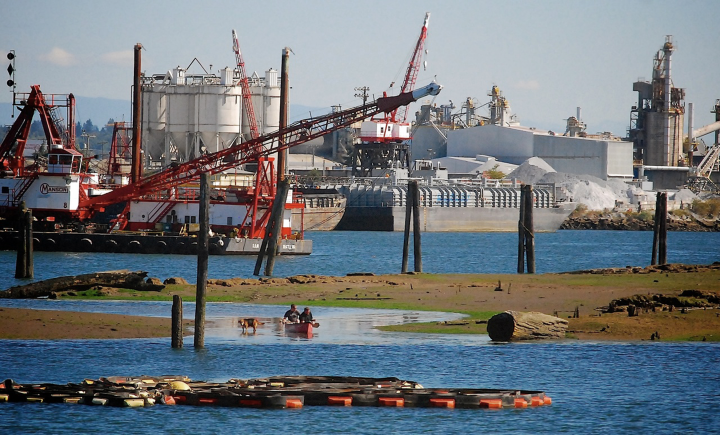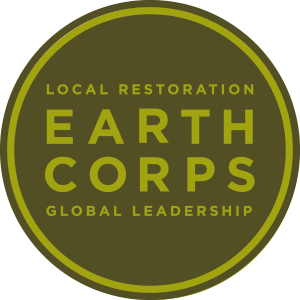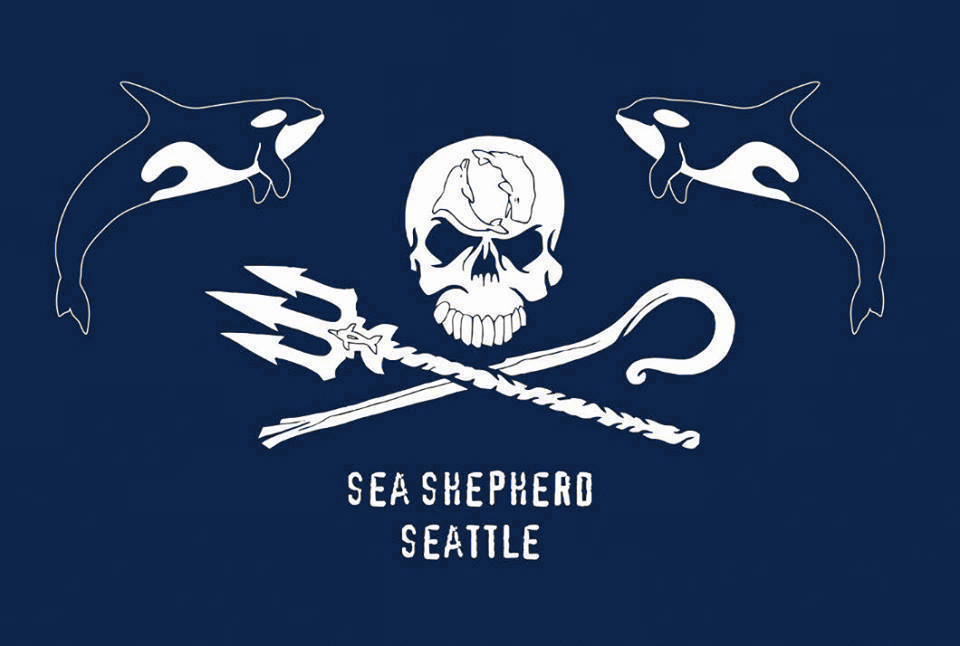
In 2001, the lower part of the Duwamish River, also known as the Lower Duwamish Waterway (LDW) in Seattle, WA, was put on the Environmental Protection Agency’s (EPA) National Priorities List. This list puts priority to cleanup toxic contaminated sites throughout the nation. These are known as Superfund sites and the agencies responsible for overseeing the LDW cleanup are the EPA and the Washington State Department of Ecology.
The waterway has been a deposit of decades of historic pollution of point and non-point sources. The Duwamish River flows north through Tukwila and Seattle, splitting at the southern end of Harbor Island to form the East and West Lower Duwamish waterways, which discharge into Elliott Bay in Seattle, Washington. The Lower Duwamish waterway was created in the early 1900’s to widen and straighten the Duwamish River for industrial usage. Industrial activities by Boeing and the Jorgensen Forge facility contributed to massive amounts of toxic metal releases even before pollution controls were in place. The contaminants in the river sediments includes polychlorinated biphenyls (PCBs), dioxin/furans, carcinogenic polycyclic aromatic hydrocarbons and arsenic. In addition, other non-point sources of pollution from upstream have contributed to the Lower Duwamish Waterway’s contamination, such as stormwater runoff from agriculture, streets, and roads.
According to the Lower Duwamish Waterway Group, “neighborhoods, tribes, waterfront industries, and recreational users of the Lower Duwamish all stand to benefit from a timely and protective cleanup. The Duwamish corridor helps drive the regional economy, supporting 100,000 maritime and industrial jobs and 25 percent of all manufacturing businesses in King County.” In addition, state and local heath department agencies have advised the public not to eat any resident crab, shellfish and bottom-feeding fish, such as flounder and English sole. This is due to unsafe levels of the contaminants, which remain present in the environment for long periods of time.
The Lower Duwamish Waterway Group is a partnership agency including the Port of Seattle, City of Seattle, King County, and Boeing. This group agreed to voluntarily do feasibility studies, and since 2003 have jointly put in controls to identify and prevent certain pollution risks, such as point and non-point sources. Also, this agency also claims that it has assisted hundreds of business and property owners to correct problems with hazardous materials, industrial wastewater, stormwater, spill containment, and leaking pipes.
According to EPA’s Final Record of Decision in November of 2014, the overall strategy for addressing the contamination will consist of three components: 1) early identification and cleanup of the most contaminated areas in the waterway, referred to as Early Action Areas (EAAs); 2) controlling sources of contamination to the waterway; and 3) cleanup of the remaining contamination in the waterway, including long-term monitoring to assess the success of the remedy in achieving cleanup goals.
Duwamish/Diagonal
As of this article’s publication, the Lower Duwamish Waterway Group has noted that several Early Action Areas have been completed. The Duwamish/Diagonal Site, located on the east side of the LDW one-half mile south of Harbor Island in Seattle, has been dredged. In total, King County dredged 66,000 cubic yards of contaminated sediments at a depth of 5 feet near four storm drains and combined sewer overflow (CSO) pipes. In addition, the group said that the project has, “isolated any remaining contaminated sediment from the environment by capping the area with clean sand. The cap surface was also designed to provide beneficial foraging habitat for salmon. In 2005, a thin layer of sand was placed around a portion of the dredged area as a follow-up, reducing the concentrations of contaminants stirred up from earlier dredging.”
Norfolk Area
In another site on the east-side of the LDW, the Norfolk Area project was an Early Action Area near the Norfolk CSO/storm drain outfall. In 1999, King County excavated 5,190 cubic yards of contaminated sediment, then backfilled the area with 6,700 cubic yards of clean soil material. Then in 2003, the Boeing company excavated an additional contaminated sediment from a small area offshore from a Boeing Developmental Center storm drain outfall, and then backfilled that area with clean sand to reduce the potential for PCBs recontamination of the Norfolk CSO/storm drain cap.
Slip 4
The other completed site project is the Slip 4 location. Slip 4 is approximately three miles upstream from Harbor Island near the Georgetown community. It is a 6.4 acre navigational slip on the east-side of the waterway, which was used as a berthing area for vessels and other industrial activities. The slip was full of debris, including logs, pilings, bulkheads and other derelict material. As a result, about 3.5 acres of the slip's sediments were contaminated with Polychlorinated biphenyls (PCBs), along with some metals, organic compounds, and petroleum products. One of the first actions was for agencies to identify and stop pollution sources. According to a report by the Lower Duwamish Waterway Group, here are the following remedial actions that have been undertaken by several local and state agencies:
-
In 2009, the City of Seattle demolished and removed the wooden sections of the existing Georgetown Steam Plant flume structure, plugged all existing input connections from adjacent properties, removed contaminated sediment from within the flume and contaminated soil adjacent to the flume, and constructed a new drainage system and outfall to Slip 4.
-
In 2011, Boeing and the City of Seattle jointly completed cleanup of contaminated soils on the Georgetown Steam Plant property and the northern portion of the adjoining North Boeing Field (NBF). Approximately 10,000 cubic yards of contaminated soil were removed from this area.
-
Boeing has conducted numerous source control actions at North Boeing Field, including: the removal of PCB-containing joint compounds, the abatement of PCB-containing paint, the cleanout of storm drain systems, and the replacement of storm drain lines.
-
During 2010, Boeing installed a temporary stormwater treatment system at the north end of North Boeing Field. A permanent stormwater treatment system was subsequently installed to treat runoff from the North Boeing Field and a portion of the King County International Airport (KCIA). Approximately 66 million gallons of stormwater were treated in the first four months of operation of the final stormwater treatment system. This system treated approximately 176 million gallons of stormwater in its first year of operation.
-
Ecology and Boeing continue to sample and test stormwater and storm drain sediments to monitor the effectiveness of source control actions at North Boeing Field.
-
From 2009 to 2011, KCIA performed source tracing, catch basin cleaning, and line cleaning within its Slip 4 stormwater drainage basin. Oil-water separators within this basin were cleaned in 2006-2007.
Terminal 117/Malarkey Asphalt
The Terminal 117/Malarkey Asphalt site is another location that has been successfully cleaned. The site rests on the west side of the LDW. From 1937-1993, Duwamish Manufacturing Company and Malarkey Asphalt Company used the site to industrially manufacture asphalt, using contaminated waste oil as fuel. In 1999, the site was acquired by the Port of Seattle and Superfund cleanup to remove PCB-contaminated soil began. Over time, the Port continued to remove contamination and debris from the site. In 2003, the site was designated as an Early Action Area as part of the current Superfund cleanup process due to high PCB levels.
In 2005, an Engineering Evaluation/Cost Analysis (EE/CA) based on industrial-level cleanup requirements was submitted to the EPA. After the discovery of additional PCB contamination in the adjacent streets in 2004-2006, the community advocated in 2007 that the end use of the site be changed from industrial to unrestricted for a more thorough cleanup. As a result, the EPA directed the Port and the City of Seattle to revise their EE/CA for a cleanup based on unrestricted use, and the Port of Seattle committed to restoring nearby habitat – after the site is cleaned up. In 2010, the final EE/CA was released to the public for comment, and the Final Action Memorandum was issued, outlining the approved cleanup design.
The current status of the site is that in 2013 crews completed the cleanup of nearby residential yards, then in 2014 continued cleanup of soils and river sediment was carried out. In 2016, City of Seattle workers removed the remaining street soils from the areas adjacent to Terminal 117.
Boeing Plant 2 and Jorgensen Forge
There are a couple of projects that are in progress and ongoing, such as the Boeing Plant 2 and Jorgensen Forge. The Boeing plant was built in 1936 as an assembly for World War II military aircraft. In 2011, the plant was demolished to make way for contamination cleanup and the area’s progress towards natural habitat restoration. In 2013, Boeing began excavating river bed sediment, which contain high levels of PCBs, metals (chromium, copper, cadmium), cyanide, petroleum products, and chlorinated solvents, such as trichloroethylene. According to Duwamish River Cleanup Coalition, a community based non-profit interest group, reported that in 2015 final cleanup “removed 265,000 cubic yards of contaminated sediment and bank soil, and replenished the area with an equal amount of clean sand. Boeing is now controlling stormwater runoff pollution with multiple stormwater treatment systems at its sites near the Duwamish River.” However, there are continued efforts with further remediation actions.
The Jorgensen Forge facility was originally built in 1942 by the navy to produce naval equipment. The facility is owned by Jorgensen Forge Corporation and is still used as a steel and aluminum forge for various industrial clients. This site is located in Tukwila, WA and contaminants such as PCBs, total petroleum hydrocarbons (TPH), arsenic, cadmium, and chromium have been found in the soils. According to the EPAs final decision report, in 2007 the Department of Ecology and the Jorgensen Forge Corporation (the current owner of Jorgensen Forge) negotiated an agreed order to conduct a source control investigation at the facility. Underground storage tank removals and some upland soil investigations have occurred. In 2014, cleanup of the site has continued and most of it has been completed with ongoing monitoring in place.
With the incoming Trump presidency, some are worried that the reduction in the EPAs budget could affect ongoing cleanup projects of these Superfund sites. But according to James Rasmussen, coordinator of the Duwamish River Cleanup Coalition Technical Advisory Group, there is little reason to be worried. Most of the agreed upon actions are carried out not by the federal government, but through a partnership with King County, City of Seattle, Port of Seattle and Boeing. These agencies are footing the bill and already have those commitments in place for the remediation activities.
Rasmussen says, “these are federal laws that are being enforced.” It’s the EPA that has a more administrative and enforcement role in the cleanup. He goes on to say, “Trump is not going to be able to change that” – not without a lot of push back from environmental activist groups. “And beyond that you have the Clean Water Act… I don’t think that in the near future, that we’re going to gut the Clean Water Act.”


